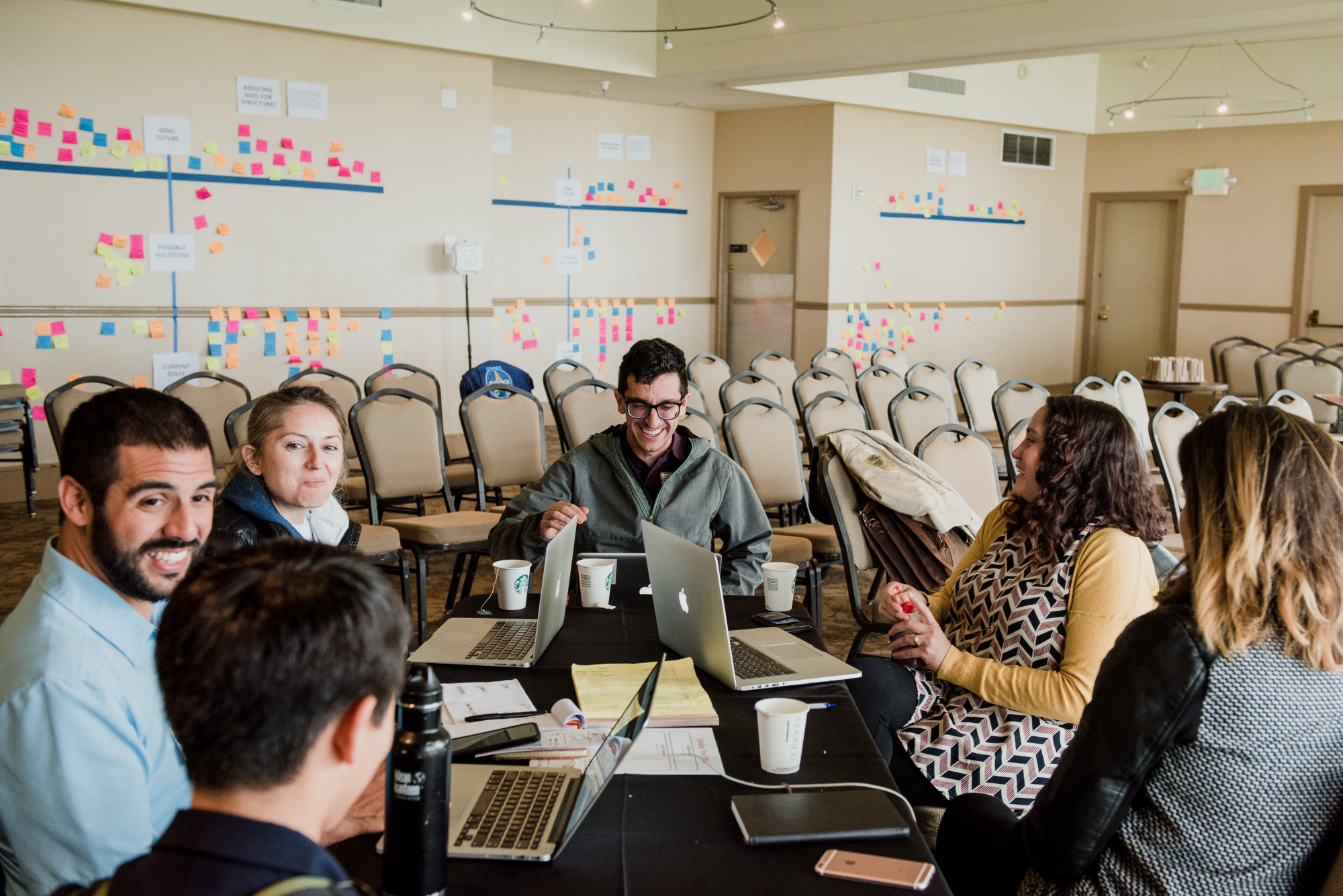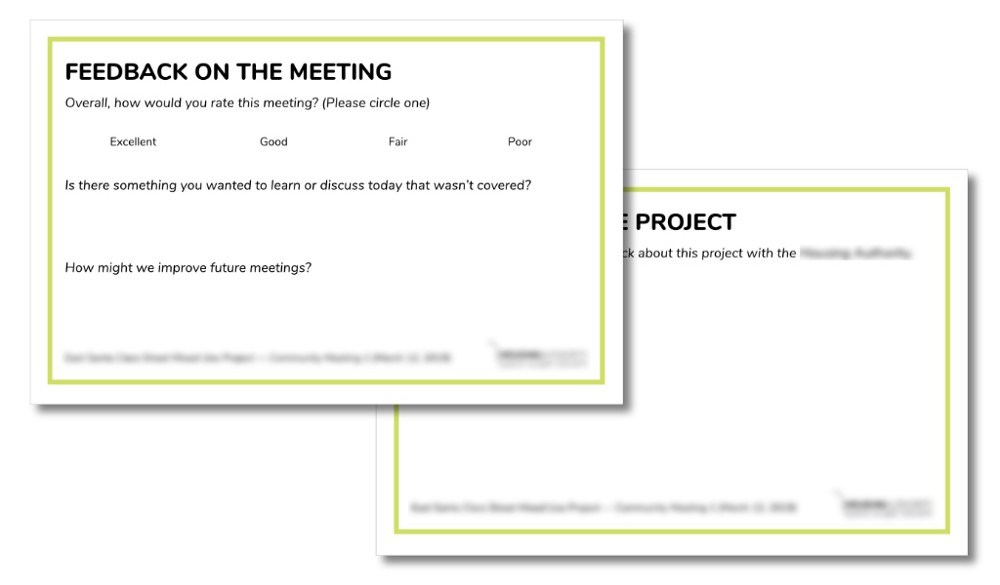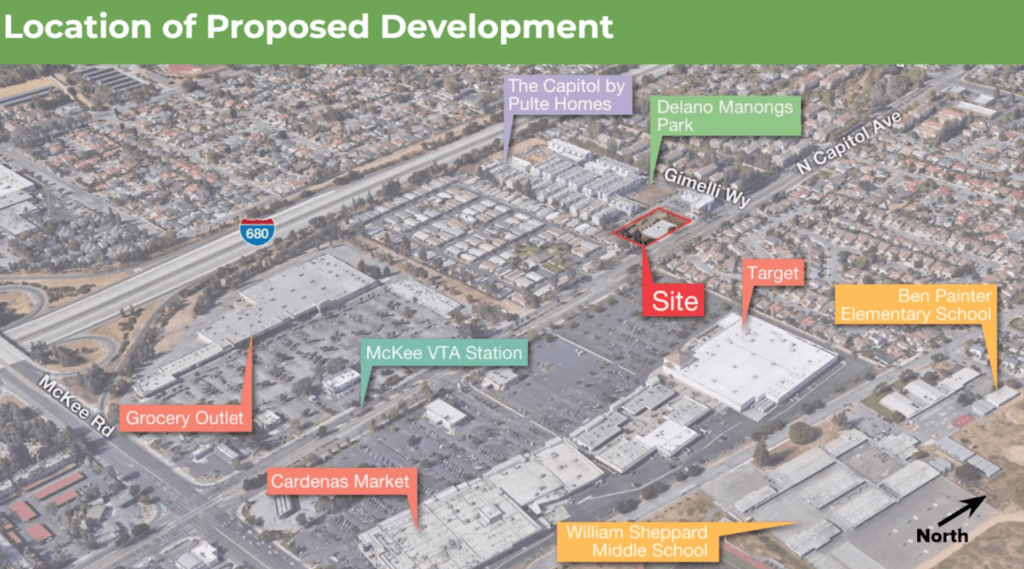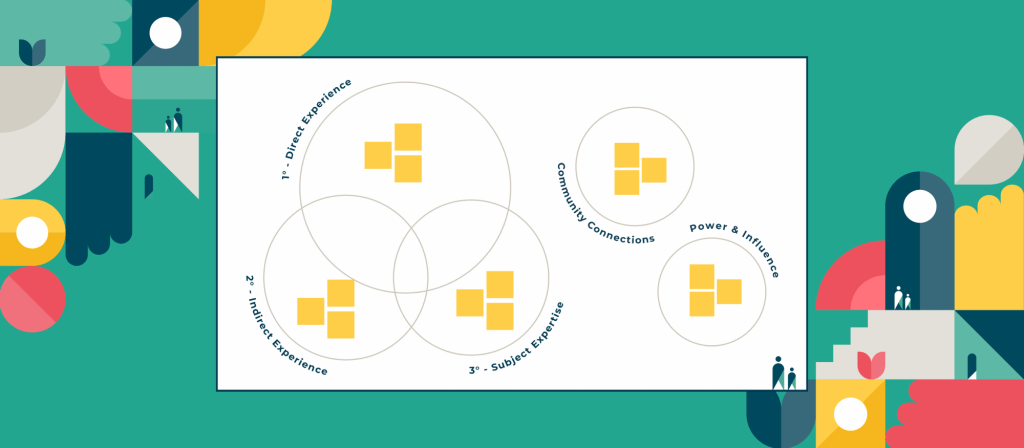Creative Constraints: Designing a Virtual Community Meeting during a Crisis
Navigating constraints, choosing a strategy, and reflecting on feedback

In the era of physical distancing, face-to-face public participation tactics like town hall meetings, community workshops and tabling are not possible. Thankfully, there is an impressive suite of digital engagement tools to choose from these days, and we at CivicMakers have had years of experience conducting many successful online-to-offline community engagement initiatives.
Before shelter-in-place, we followed the mantras “meet people where they are” and “provide multiple ways to engage.” This often resulted in parallel online/offline experiences. Now (during the pandemic) we have been challenged to meet the needs of our public sector clients and the communities they serve, while being sensitive to this time of hardship. What we have found is this: while digital engagement can work extremely well, we also need to consider analogue methods that extend its reach. What follows is an example from a current project that we hope will inspire and guide other public agencies.
What we have found is this: while digital engagement can work extremely well, we also need to consider analogue methods that extend its reach.
Case Study: Community Engagement for Affordable Housing Development
This is the story of a housing agency conducting its first ever (and likely not last) virtual engagement, which resulted in numerous positive reviews from respondents, and meaningful community input to move the project forward.
Since last Fall, CivicMakers has been supporting a housing agency and a team of architects with an affordable housing and open space development project in Northern California (because this project is still in progress, we are keeping it anonymous).
Navigating Constraints
The first community meeting was intended to be hosted in-person, but in reaction to the COVID-19 pandemic, we decisively shifted gears and redesigned it to be entirely virtual. Because affordable housing is considered an essential service, we needed to keep the project moving forward. We assessed both the unique constraints of the project and the varied needs of the community.
Based on precedence and client preference, we had originally planned an in-person community meeting with a classic format: opening presentation followed by design feedback activities (on poster boards around the room). Like any inclusive public engagement effort, we were to have on-site interpretation in order to capture the broadest possible voices. In addition to sharing feedback on the boards, community members would have the opportunity to ask 1:1 questions of individual members of the housing agency and architect team.
As for the needs of the community, we knew from early conversations with community representatives and the demographics of the area that many would rate low on tech savviness and some do not even have internet at home, though most are likely to have a smartphone.
Choosing a Strategy
With these factors in mind, we considered our options:
1) Real-time Online Presentation, Q&A, and Feedback: Live virtual meeting to share project information. Use a combination of speaker audio controls, the chat feature and live polling to field questions and gather feedback on draft designs during the video call. We would also use the live interpretation feature in Zoom.
Pros: The community can ask questions and receive answers in real time; An interactive discussion about each of the design drafts could produce richer input (than a survey).
Cons: Could result in “grand standing” wherein a few participants direct the discussion away from the topic at hand while other voices go unheard; Community members without reliable internet at home or without high levels of tech savviness may not be able to engage comfortably and confidently via Zoom; We had not tested live interpretation and worried that the experience for Spanish speakers would be sub-par.
2) Real-time Presentation and Q&A, plus Follow-Up Survey: Live virtual meeting to share project information. Limit audience speaker audio controls. Use the chat feature to field questions and respond during the video call. Link to a survey to gather feedback on draft designs. As with the option above, we would use the live interpretation feature in Zoom.
Pros: The community can ask questions and receive answers in real time; We can prevent “grand standing” by fielding questions via the chat feature, allowing us to prioritize the most repeatedly asked and relevant questions.
Cons: People without reliable internet at home or without high levels of tech savviness may not be able to engage comfortably and confidently via Zoom and SurveyMonkey; We had not tested live interpretation and worried that the experience for Spanish speakers would be sub-par.
We ultimately decided on number this third and final option:
3) Pre-Recorded Presentation, plus Follow-Up Survey and summarized Q&A: Video presentation (Zoom + YouTube) to share project information. Link to a survey (SurveyMonkey) where people could ask questions and give feedback on draft design concepts. Post responses to the most common questions on the project website and send via email.
Pros: Community members can watch the presentation and complete the survey at their own convenience. Questions can be answered in a thorough and thoughtful manner (in writing). Professional translations of the presentation and survey would be higher quality than real-time interpretation.
Cons: Responses to community questions are indirect and includes lag time. Community members without high levels of tech savviness may still not be able to engage comfortably via SurveyMonkey.

Reflecting on Feedback
It was a great success! Over the course of one week we received 60 responses from nearby neighbors and businesses (more than anticipated given the crisis). We also heard some great feedback, because of course, as we would in an in-person meeting, we ended our survey with a virtual “comment card”inviting input on the virtual engagement.

Here’s what we heard:
“It appears that a serendipitous result of shelter-in-place is that you are proving there are effective and better ways to do community engagement through online channels.”
“I feel like the video/survey [option] should always be available. In-person meetings are fine, but the fixed schedule is not always suitable for everybody. […] this format is awesome and we should also include it going forward.”
“I really like this online format better. I have a 4-year old, so this is much more convenient.”
Pros:
In reflection, we believe the benefits of this approach include:
- Entirely in-language experience
- Accessible via smartphone (no internet connection required)
- Does not require downloading any software or creating an account
- Allows people to participate on their own time (asynchronously)
- Allows participants to pause the recording to re-listen to particular points of interest, even while responding to the survey
Cons:
Of course, there were also some drawbacks. Several respondents noted that they wanted a venue for discussion and real time Q&A. In reflection, given this feedback and the nature of the project, this approach paired with an optional “office hours” by conference call (in both languages) could have been the perfect combination.
Furthermore, we recognize that engagement from the Latinx community could have been greater, and we plan to dig into ways to expand our reach going forward. Perhaps a survey by mail or allowing for input via voicemail would increase our reach.
Luckily, we’ll have the opportunity to learn from the lessons of this experience as the project calls for another virtual community meeting in the coming month. It’s time to integrate our learnings and iterate on our prototype to create an even better experience next time!
Are you looking for a thought partner in reimagining your engagement strategy online? We’d love to hear from you! Check out our online & remote services and get in touch!



